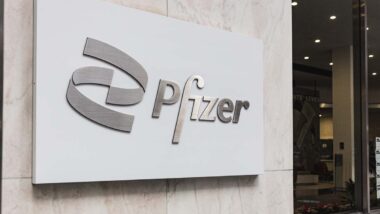Top Class Actions’s website and social media posts use affiliate links. If you make a purchase using such links, we may receive a commission, but it will not result in any additional charges to you. Please review our Affiliate Link Disclosure for more information.

Article takeaways:
- Differences between Claims-Made and Common Fund Settlements
- Cases Studies for Califia Farms, General Electric Company, Keurig/Dr. Pepper, and Sig Sauer
- For Lawyers: Alternative Settlement Strategies for Defendants
Note: This article has been adapted for Top Class Actions. An original version was published on RiskSettlements.com.
Class action settlements in the United States are allocated among claimants in many ways but two types are used most often and they deserve analysis.
The difference between common fund and claims-made settlements are easy to understand and I’d like to compare the two, highlight a number of recent successful claims-made settlements, and discuss how combining Class Action Settlement Insurance (“CASI”), a risk transfer solution, with a claims-made settlement can help defend a business.
The Differences Between Common Fund and Claims-Made Settlements
Claims-made settlements sometimes represent the only vehicle through which consumer claimants can recoup part or all of the economic losses sustained from purchases and other undocumented transactions where defendants aren’t able to identify who those class members are through their own records and data. Claims-made settlements are also common in class actions involving statutory violations, such as the TCPA, FLSA, BIPA, among others. Settlements like these can often make larger individual and aggregate benefits available to class members, leading more claimants who believe they were adversely impacted by the defendant to recover money. Especially in matters in which class members are customers of the defendants, it is beneficial for companies to allow those who feel aggrieved by them to be adequately compensated.
On the other hand, common fund settlements show up almost exclusively in antitrust and securities class action settlements, but can be used in other matters as well. When the parties agree to a common fund structure, the defendant creates a settlement fund and class members receive a portion of the fund. That scenario may result in a windfall for some claimants when the claim rate is low. When the class does not have to self-identify or validate information, some funds are paid out directly to class members without any claim process. Regardless of the payout mechanism, all common funds share one characteristic — the entire fund is distributed to lawyers, the claims administrator, the class members, and, in some cases, unrelated cy pres recipients.
Courts will review all settlements to determine whether the notice plan meets constitutional due process, the parties’ proposed agreement is the result of arm’s length negotiations, the settlement is fair to absent class members, the release is tailored to the claims which have been asserted or could have been asserted, and that the class counsel’s proposed fees and expenses are fair and reasonable.
Both common fund and claims-made settlements routinely gain approval, but in claims-made settlements, defendants can often make a larger benefit available to compensate those who feel aggrieved, thereby making the settlement “more fair” to absent class members. Defendants should consider making use of the claims-made mechanism as a means to resolving class actions, particularly where settlement risk transfer options exist to transfer the risk from defendants to an insurer.

Recent Claims-Made Settlements Approved by Courts
A note: Risk Settlements does not and cannot comment on whether or not it consulted on any specific matter, however, information on any case discussed herein is readily available in the public domain.
Cicciarella v. Califia Farms, LLC, 7:19-cv-08785 (S.D. New York 2020)
Plaintiffs brought a consumer products action against Califia Farms, alleging false marketing, advertising, and labeling of certain dairy-alternative milk, cold brew coffee, non-dairy creamer, yogurt and/or yogurt drink products. Specific allegations were regarding the misleading labeling of vanilla, carrageenan, chocolate, nut, or other colors or flavors in nearly 100 products.
The class period spanned nearly six years and, in addition to changes to business practices, the settlement offered class members benefit payments of: $1.00 per product up to a maximum of $15 for claims accompanied by proof(s) of purchase, and for those claims without proof of purchase, $.50 per product, up to $5 per valid claim. The Court determined that the claims-made “settlement was fair, reasonable, adequate and in the best interests of Settlement Class Members” and further noted the “Settlement Agreement confers substantial benefits on the Settlement Class Members, is not contrary to the public interest, and will provide the Parties with repose from litigation.” Accordingly, all objections were overruled, and class counsel were granted their requested fee and cost request.
Grayson v. General Electric Company, 3:13-cv-01799 (D. Conn. 2020)
General Electric Company (“GE”) settled a class action involving certain models of its GE Profile and GE Monogram microwaves. The Court granted approval with the following benefit structures: (i) class members who could sufficiently demonstrate their microwave’s oven door experienced glass shattering would receive $300; (ii) class members who currently owned the subject microwave but never experienced glass shattering of the oven door would receive $5; and (iii) class members who had previously owned the subject microwave but never experienced glass shattering of the oven door could receive a $5 rebate on the purchase of a GE microwave oven. If a dispute were to arise as to the validity of a claim, a Neutral Evaluator was appointed to render a final and binding decision in such an instance.
As there were two sets of damages categories in this settlement – those who had glass breakage and those who did not – the Court, when granting its July 27, 2020 final approval of this claims-made settlement noted that such concern did “not constitute grounds to withhold certification of this broader class for settlement purposes. That is so because, under the proposed Settlement, there will be no need to prove damages on an individualized basis, except through a simplified claims procedure, which will only seek to distinguish between valid and invalid claims and to place valid claims in one of two damages categories, i.e., those who suffered glass breakage and thus are entitled to a $300 award and those who did not and are thus entitled to a $5 award.” One objection was filed to this settlement and overruled.
Hartley v. SIG Sauer, Inc., 4:18-cv-00267 (W.D. Mo. 2020)
This class action sought to hold defendant Sig Sauer, Inc., a firearm designer and manufacturer, accountable for dangerous design defects of its model P320 pistols, several hundred thousand of which were sold. Sig Sauer’s defective pistols were capable of firing unintentionally, including when dropped. After preliminarily approving the uncapped claims-made settlement in February 2018, the court finalized the parties’ agreement on June 25, 2020.
The court certified three settlement classes designated by (i) whether the claimant’s firearm had previously malfunctioned and, (ii) whether the purchaser sought repair from Sig Sauer. The 24-month class period allowed eligible class members to receive a voluntary upgrade, full refund, or refund for any previous repairs.
Carlotti v. Asus Computer Int’l., 18-cv-03369 (N.D. Cal. 2018)
In this nationwide consumer class action, purchasers sued Asus over two laptop models that experienced power retention and overheating defects. The plaintiffs brought various breach of warranty and fraud claims against the Taiwan-based computer manufacturer for the approximately 24,800 faulty computers sold.
Judge Ryu of the Northern District of California granted final approval for this claims-made settlement that offered class members either a cash payment or credit from Asus, and an extended warranty to repair malfunctioning computer components as a form of injunctive relief. The Court approved the $21.3 million settlement as fair and in the best interest of the class.
Shin v. Plantronics, 18-cv-05626 (N.D. Cal. 2018)
In Shin, the lead plaintiff lodged various state law consumer claims against Santa Cruz, California-based Plantronics, an electronic device manufacturer, whose defective sport headphones were at issue because although marketed as “sweatproof” and “waterproof,” they were not. The parties reached agreement the day after the motion to dismiss hearing. After initially denying preliminary approval of the class action settlement, Northern District of California Magistrate Judge Nathaniel Cousins granted preliminary approval and subsequently, final approval for the parties’ amended claims-made settlement on January 31, 2020 which provided class members with three options: (i) extended warranty to replace malfunctioning batteries; (ii) a $50 cash payment for those who filed a prior warranty claim; or (iii) a $25 cash payment without proof of prior warranty claim.
After sending 650,000 direct notices, the Court approved the claims-made settlement as fair and stated that the response rate was “within the range of response rates approved by the Ninth Circuit.”
Jackie Fitzhenry-Russell v. Keurig Dr. Pepper Inc., 5:17-cv-00564 (N.D. Cal. 2017)
Close to the eve of trial, a class of consumers who brought suit against beverage maker Keurig/Dr. Pepper over its false claim that its Canada Dry ginger ale contained “real ginger,” settled the matter using a claims-made settlement. The company agreed to allow California purchases a return of $0.40 per soda with a $2.00 floor and $5.20 ceiling for those without proof of purchase, and up to $40 with proof. The settlement also provided that the fund would terminate if the number of claimants reached one million.
Keurig/Dr. Pepper faced not only this California class action, but other suits around the country. After the parties settled the California case, other plaintiffs filed a 49-state class action in Missouri state court, which the defendant resolved with a corresponding 49-state settlement shortly thereafter. Two other actions were filed in New York and Massachusetts and were privately settled. Keurig/Dr. Pepper was clever to ensure that a single claims administrator provided notice, and received and processed claims from all the false advertising suits it defended, thereby boosting efficiency and lowering costs.
Kumar v. Salov North America Corp., 4:14-cv-02411 (N.D. Cal. 2017)
In Kumar, purchasers of Filippo Berio olive oil claimed that the cooking oil’s false label influenced their decision to buy the “Imported from Italy” product, and caused them to pay more for it than they would have otherwise. The California federal court approved the nationwide claims-made settlement in 2017. The Ninth Circuit affirmed a year later, finding that the district court did not abuse its discretion in approving the settlement after analyzing the relevant factors to determine that it was fair, reasonable, and adequate.

Class Action Settlement Risk Transfer Solutions
For companies that have limited resources and face significant class settlement exposure, an important risk transfer tool exists that both defense counsel and class counsel should be aware of.
Class Action Settlement Insurance (CASI) can be used to jettison the financial uncertainty clouding the resolution of class actions involving fraud, mislabeling, product liability, and statutory violations of the TCPA, FLSA, BIPA, among others. This risk transfer solution can be an important arrow in the settlement quiver of class counsel, defense counsel, and mediators.
Dean Gresham is the Managing Director at Risk Settlements where he leads the affirmative asset recovery and litigation buyout strategies, in addition to assessing legal and financial risk across all company solutions.
Prior to Risk Settlements, Gresham practiced more than 20 years as a plaintiff’s trial lawyer and was awarded the Elite Trial Lawyer of the Year award in 2020 for his work on complicated adoption cases by The National Law Journal. Throughout his years of practice, Gresham was consistently recognized for being a top attorney by SuperLawyers, and The National Association of Trial Lawyers, among others.














